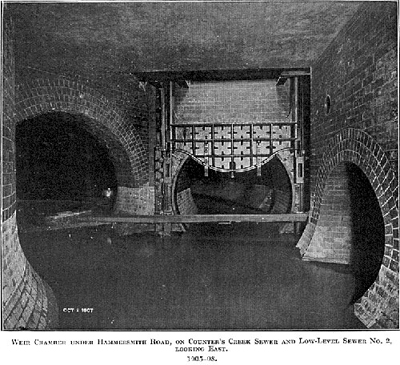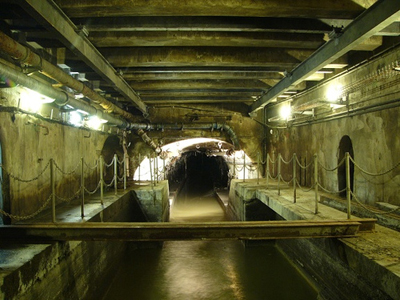In Paris, after visiting the Eiffel Tower, Le Musée d’Orsay, Notre Dame, etc, go to the Musée des Egouts, a museum sited inside a working sewer with real Parisian turds floating by on their way to the sewage treatment plant. Now, I could be accused of bias in my choice of tourist trips as I have been down the London sewers, my grandfather worked in them, I own a t-shirt celebrating the alligators of the New York sewers, and, as a plumber, have cleared many a blocked drain. But even my partner (a psychotherapist) admitted it was quite interesting though, she wasn’t too keen on the smell. So how is it possible to have a museum inside a Parisian sewer? In the London sewers all visitors would have to wear thigh-high waders and safety harnesses as they waded through sewage reading the information!

The design of the sewers in each city is very different. The London sewers were designed by Bazalgette and opened in 1865 with 160 km of intercepting sewers and 720 km of street sewers. They are shaped like an inverted egg and were designed like that because, as combined sewers, they had to (and still do) cope with major fluctuations in the amount of effluent they carry. Under dry flow conditions a sewer may be running at less than 20% capacity whereas when it rains it can be completely filled. The inverted egg-shape means that the scouring velocity is relatively high even when the overall water quantity is small, and this shape is therefore far more efficient at carrying low sewage flows than circular sewers would be.
The Paris sewer network was designed by Eugene Belgrand in 1850 and by 1878 the sewer network was 600 km long. The sewer is shaped like a button mushroom; the sewage flows in a channel (a cunette), and there is a walkway on both sides of the cunette. Maintenance of the sewer can be done from the walkway, using a variety of different methods. Access to the sewers is from the pavement, and an underground passage leads into the middle of the road where the sewer is. This is fascinating and what is even more interesting is the network of pipes running at high level within the sewers. The sewers were designed to carry two separate water supply networks, one for potable water (supplied into buildings) and the other for non potable water, used for cleaning the streets of Paris. It is a fabulous design. Any leakage can be easily identified and repaired, whilst street cleaning uses water fit for purpose and with a lower carbon load than if drinking water was used. In addition to the water mains the sewers now house telecommunication cables and even pneumatic tubes in some areas.

A history of sanitation in Pairs from the middle ages to the present day, plus actual exhibits of the different machinery used to clean the sewers inform the visitor. The information panels are somewhat water damaged as this sewer has flooded across the walkway to a height of about one metre, obviously following heavy rainfall, but that just highlights the fact it is a working sewer; as do the signs warning you not to touch the walls, to wash your hands when you exit, the noise and smell of the flowing sewage, and the staff, who are the sewer workers themselves. Don’t miss it!
